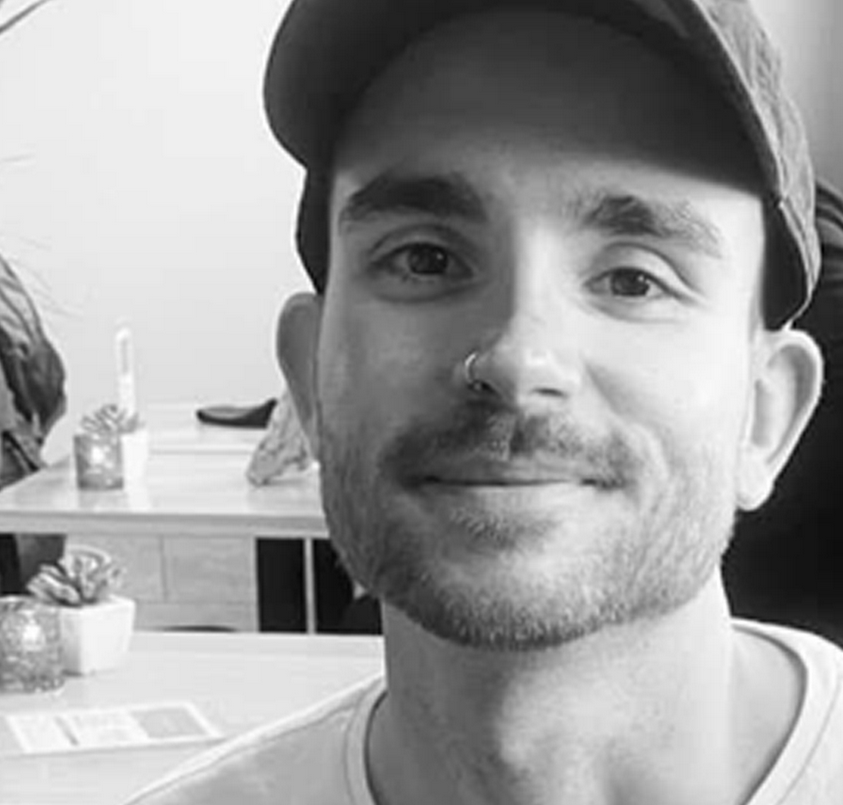Detox.com Fall 2026 College Scholarship

A rehab scholarship is when the drug or alcohol treatment program waives either a portion of its costs (partial scholarship) or up to 100% of its treatment costs (full scholarship) for applicants in need. Rehab grant funds, on the other hand, are issued directly to addiction treatment and mental health programs, then disseminated among clients. Mandated by Congress, these noncompetitive grant funds make it possible for many programs to offer financial aid. As is the case with most assistance programs, there are stipulations for funding.
Here are some important details about rehab scholarships:
- Rehab facilities set aside a certain amount of income each year to offer scholarships. Financial aid is offered until all the allotted money is used.
- Rehab scholarships are generally needs-based. That means aid is only offered to those who are under- or uninsured and have no other financial means or assets to pay for treatment.
- For additional funding support, rehab scholarships can be combined with private insurance, Medicare, or Medicaid if those plans do not cover 100% of treatment costs.
- Not every rehab program offers scholarships. That means you’ll need to do some online research, create a list of rehabs in your area, then call each facility to ask if they offer scholarships.
Finding a rehab scholarship doesn’t need to be difficult. Start by browsing our treatment directory and making a list of programs that suit your needs. Next, call each facility on your list and ask if they offer rehab scholarships.
For rehabs that offer scholarships, ask for details on their application process. Some programs have an intake manager who can take your information and application over the phone, some allow you to apply online, and some require you to apply in person.
A few things to keep in mind:
- Be prepared to explain your personal story and why you need financial assistance to access addiction treatment services.
- Gather and be prepared to share personal and financial documents (i.e., proof of income, checking and savings account balances, monthly expenses, proof of insurance coverage, etc.)
- Understand that competition for rehab scholarships is fierce; that means you may have to submit numerous applications before getting a positive response.
- Individual rehabs are independently run and commonly provide scholarships to cover the cost of one of their programs. The scholarship amount depends on the treatment center and available funds.
- Corporations (both for-profit and nonprofit) that own and operate rehab facilities sometimes offer treatment scholarships to cover the cost of their programs.
- Nonprofit organizations, including religious rehab facilities, often offer scholarships for those admitted to their treatment programs. Providing free or affordable treatment is typically their focus.
$2,250 in Scholarships for College Students to Be Awarded
How To Enter
- Review Eligibility: Before entering the contest, review the Terms/Conditions requirements and the rules and regulations below to make sure you qualify.
- Complete Application: Complete the contest application form below providing all required information.
- Submit: Once your essay is written, save as a Word Doc or PDF and submit with your scholarship contest application.
Essay Topic And Guidelines
Essay must be submitted with the application, which should include the author’s name, address, phone number, email address, college (including the date of graduation), and student ID number.
- All entries must be typed, double-spaced, and saved as a Word Doc or PDF.
- Do not add pictures or graphics
- Essays that do not meet the word count requirement will be eliminated. (The essay title or added references / footnotes do not contribute to the total word count.)
- AI-generated essays will not be accepted
- A contestant’s teacher, counselor, or parent may check the essay for punctuation, grammar, and/or spelling, but the essay MUST BE the original work of the student making the submission.
- Contestants will be judged based solely on their essay.
USING YOUR OWN WORDS, PLEASE ANSWER THE FOLLOWING QUESTIONS IN 500-700 WORDS:
In 1894, a report from the American Medical Association claimed, “Never, nowhere, does a drug replace a moral want or deficiency in man” and argued, “This moral basis of a cure is true, and it gives the best possible and only assurance of its duration.” Today, the medical community believes that the opposite is true–that drug addiction is not a personal or moral failure. But the stigma still persists and often discourages people from seeking detox to begin the first step toward recovery. How can we, as individuals and as a society, counter the persistence of stigmas and encourage loved ones to begin detox?
Rules And Regulations
- Essay must be the original work of the contestant. Plagiarism will automatically disqualify your entry.
- Contest awards and decisions are final unless an entrant is disqualified.
- Essay submissions that do not meet the requirements (listed above) or sent after the application deadline will not be considered.
- Scholarship winners grant Detox.com the right to use their essay content in connection with this contest, marketing efforts, and publication of the essay, as well as the right to use the winners’ names and/or identifying information to promote the contest.
- Detox.com will read and judge each eligible essay submitted on time; essays submitted after the deadline will not be accepted or read.
- Contest prizes (scholarship award monies) can be revoked after awards are given if entrants are discovered to be ineligible or found to have broken contest rules.
- Detox.com reserves the right to change submission deadline to an earlier deadline if application submissions greatly exceed the number projected. Prospective applicants should enter as early as possible.
- Should Detox.com have to change any contest rules, we will notify participants via email. If participants are dissatisfied with changes, they may retract their submission.
- All federal, state, and local charges or taxes on prizes must be paid by award winners.
- Essay submissions for this contest become property of Detox.com to be used and reproduced.
"*" indicates required fields
Fall 2025 College Scholarship Winners

Jason Morocho
(Click to view essay)
A Path Toward Healing at Home:
The Promise of Outpatient Recovery Many people who struggle with addiction do not seek treatment because they are afraid of what it might cost them. Not just financially, but personally and professionally. They worry about taking time off work, being away from their children, or facing judgment from coworkers or neighbors. This fear can keep someone from asking for help, even when they know they need it.
That is why outpatient or ambulatory detox programs are so important. They offer a chance to begin recovery without completely stepping away from daily life. Ambulatory detox allows someone to get the care they need while continuing to live at home. Instead of staying overnight in a treatment center, patients attend scheduled sessions for medication, counseling, or check-ins. This means they can go to work, care for family members, or attend school while beginning their recovery journey. It gives people the flexibility to keep going with their responsibilities while also making space for healing.
One of the best ways to improve access to outpatient care is through better education and outreach. A lot of people still believe treatment only happens inside a rehab center. They do not know that outpatient detox even exists. Hospitals, schools, and community health centers could help spread the word by offering informational sessions or pamphlets that explain how ambulatory treatment works. People are more likely to seek help when they understand their options.
Another important step is making these programs easier to afford. Many insurance plans do not fully cover outpatient services, and without support, many families simply cannot pay for them. Expanding insurance coverage for ambulatory detox would give more people a real chance at recovery. State and local governments could also support these services through grants or public funding. If care is available and affordable, more people will choose to get help.
Doctors and other healthcare workers should also be trained to recommend outpatient programs. When a patient says they cannot afford to go away for treatment, or they are afraid of losing their job, providers can offer ambulatory detox as a realistic option. That first conversation can make all the difference. When someone hears there is a way to get better without leaving everything behind, it can give them the courage to start.
Outpatient care has many benefits. It lets people stay connected to their families and communities, which helps them feel supported. It also gives them a chance to practice healthy habits in the real world right away. Instead of recovering in isolation, they are learning to cope while still managing everyday life. For some people, this leads to stronger, more lasting progress.
Of course, outpatient treatment is not the best fit for everyone. People who have severe addictions, unstable living conditions, or health issues may need more support than an ambulatory program can offer. That is why careful screening is important. Treatment plans should be made on a case-by-case basis, with doctors helping each person decide what kind of care will work best for their situation.
Still, the advantages of outpatient detox cannot be ignored. It removes one of the biggest barriers to treatment by offering flexibility and privacy. It allows someone to begin healing without giving up their job, their home, or their family. It also helps reduce the shame some people feel when they think about going to rehab. Outpatient care sends a message that treatment is not just for those who can afford to disappear from life. It is for anyone who wants to get better.
In the end, raising awareness and improving access to ambulatory detox is about meeting people where they are. Not everyone can pause their entire life to get clean, and they should not have to. Recovery should not be a luxury. It should be a possibility for anyone, at any time, in any place.

Michael Kelly
(Click to view essay)
Raising Awareness and Decreasing Detox Stigmas Through the Media
During my formative years, which collided monstrously with my father’s prime drinking years, I had always hoped that his body would do everything it physically could to expunge the toxins he put into it every day. Then, like clockwork, he’d reignite the cycle every night with another swig of whiskey.
Once he got sober in December 2018, the withdrawal period that my dad suffered through was intense. My father was always tired, struggling with newfound insomnia on top of his already-existing sleep apnea, and whereas alcohol used to be a reliable sleep aid for him, that option was no longer on the table. He’d leave for work every morning with raven-black bags the size of shipping containers under his eyes, and his body would shamble out the door, yearning for the self-applied treatment that he knew he couldn’t indulge in any longer.
His mind had told him it was time to move on, but his body didn’t want to quit.
Ambulatory Detox was something that could have been used by my father to expedite his healing process while keeping his work life and home life balanceable. Treatment could have been a valuable tool for his body as he continued to go to work and try to support our family through a personally difficult time.
After someone makes the decision to give up alcohol, they are directed toward spiritual and emotional support groups. And while these programs are exceptional at what they do to help ease the tension of a recovering alcoholic’s mind (they certainly transformed my father into a stronger man), the body still has a lot of catching up to do.
I believe that in order to increase awareness for ambulatory detox, there needs to be a way for outpatient detox services to become more culturally mainstream in the same way that emotional support groups are. Mass media exposure on television and social media, as well as interactions with celebrities are great jumping off points for medical procedures and treatments to become accepted and more heavily known in the mainstream population. Whether it’s a TV show like Breaking Bad showing the intricacies of cancer treatment, or celebrities like Selena Gomez giving credence to lesser-known chronic diseases like Lupus, media and celebrity exposure is the number one way for medical ongoings to get more culturally accepted. If a well-known recovering alcoholic pushed ambulatory detox in the media as a valid solution, or if it became part of a TV or movie storyline, then perhaps families like mine would have been more aware of it when people like my father could have used it most. I only hope in the future that it will become less of a niche option, as it obviously has real benefits.
Our home was stable, and my parents did everything they could to keep our family dynamic intact together while my dad struggled with intense, daily alcoholism for the better part of 11 years. Through spiritual and emotional focus, a dedication to Alcoholics Anonymous, and sheer discipline, my father was able to recover from his isolating alcoholism, and is now approaching his seven-year anniversary of sobriety. However, those first few months were Hell on Earth for him, and I can’t begin to imagine how much easier it would have been had ambulatory detox been something he indulged in to ease the pain. Simply having some kind of treatment to make it easier for him to sleep at night and operate at near-full capacity during the day would have made a world of difference.
Shortly after my dad’s one-year anniversary, the pandemic hit, and I can’t imagine the level of strength and discipline that it took to stay away from alcohol during a remarkably isolating, transformative, and uniquely challenging time in history. Trying to remain sober when the universe hands you a world-altering reason to drink had to have been incredibly difficult.
My dad did his initial stages of recovery on “hard mode,” but had he or any members of my family been more aware of ambulatory detox as a potential load-lifter, the process of his recovery could have been just a little bit easier.

Darren Le
(Click to view essay)
A Comprehensive Approach to Increase Treatment Access
Addiction is one of the most persistent health crises in the United States. Yet, despite progress in reducing stigma and improving treatment options, many people who suffer from substance dependence still avoid getting the help they need. One major barrier is fear. People often worry about missing work, losing income, or abandoning family responsibilities. Some people worry about social judgment or losing their job. As a result, they avoid inpatient rehab, even when they know it could save their lives. Ambulatory detox and outpatient recovery programs offer a valuable solution for those who are medically stable and need to balance recovery with daily life.
A person’s silhouette stands triumphantly against the backdrop of a sunrise, representing the dawn of a new day in recovery. The transition from darkness to the light of sunrise symbolizes hope, renewal, and a fresh start after the long night of addiction. Just as each morning’s sun brings the promise of untapped opportunities, entering recovery begins a new chapter filled with optimism and the chance to rebuild one’s life (Avena Integrative Medical Center).
One of the first steps in increasing access to ambulatory detox is to change how the public understands addiction and recovery. Most people think of rehab as a hospital stay or residential program. But that is not the only way to heal. According to the Substance Abuse and Mental Health Services Administration (SAMHSA), outpatient treatment can be just as effective for people with mild to moderate substance use disorders, especially when paired with counseling and community support (SAMHSA). These programs allow people to continue working, caring for their families, and maintaining their routines while getting the treatment they need.
To raise awareness, public health campaigns should focus on educating communities about outpatient detox options. This fact includes distributing information in doctors’ offices, schools, community centers, and places of worship. Public transit systems, grocery stores, and online platforms can also be effective venues for spreading the message. Education should focus on normalizing recovery, showing that treatment does not have to be disruptive or isolating. When workplaces understand that recovery can happen without a leave of absence, people may feel safer seeking help.
There are several benefits to ambulatory detox. One of the biggest is flexibility. Clients can attend appointments during the day and return home in the evening. They do not have to leave their families or jobs, which makes the process less intimidating. This continuity often helps people stay motivated and supported. According to the National Institute on Drug Abuse, social support is a key factor in successful recovery, (National Institute on Drug Abuse). Staying connected to family, friends, and community while detoxing can provide emotional stability and reduce the risk of relapse.
Technology can also play a powerful role in making outpatient care more accessible. Telemedicine, which expanded during the COVID-19 pandemic, allows patients to meet with counselors, doctors, and caseworkers from home. This event is especially useful for people in remote areas or those with limited transportation.
In conclusion, ambulatory detox and outpatient care are life-saving options that too few people know about. To improve access, we must invest in education, technology, and community-based care. We must remove the shame that surrounds addiction and replace it with empathy, flexibility, and evidence-based solutions. Everyone deserves a chance to heal without sacrificing their livelihood or family. By meeting people where they are, we can help them take the first step toward a better future.
Spring 2025 College Scholarship Winners

Edward MonteCalvo
Kaylie Moczygemba


